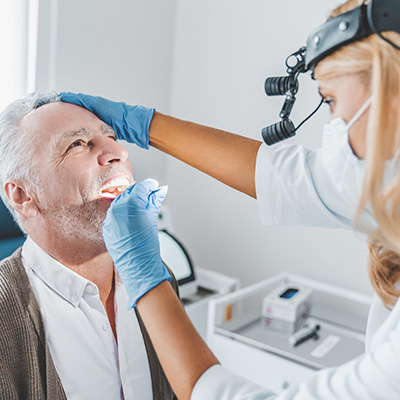Vitality eNews Sign Up
Receive the Summa Health eNewsletter for the latest health tips, advice and updates.
Oral, Head And Neck Cancers: Get The Facts On Risk Factors, Symptoms
Posted June 20, 2022 by Greg Manson, M.D.

While head and neck cancers are not the most common malignancies diagnosed in the US, it affects a significant number of patients. According to the National Cancer Institute, this group of cancers occur in about 4 percent of all cancers in the country.
While more common cancers such as breast, colon and lung cancer are more known, oral, head and neck cancers can and do occur, especially in men. Additionally, the population affected by this disease has changed over the last several decades.
Summa Health is shedding light on oral, head and neck cancers, risk factors, symptoms and key prevention measures. Catching any cancer early — before it has a chance to grow and spread — is key to improving your outcome.
Types of oral, head and neck cancers
Oral, head and neck cancer is a group of cancers that can be found in the:
- Mouth (oral), which includes the tongue, lips, inside of cheeks, gums and roof of your mouth
- Throat (pharynx), which includes your tonsils, back of your tongue, mouth (soft palate), your voice box, including your vocal cords
- Tonsils, which sit at the back of your throat
- Thyroid gland, found at the base of the neck
- Nasal cavity and sinuses
- Salivary glands, which produce your spit (or saliva)
There are many parts of the mouth and throat that support our ability to breathe, talk, eat, chew and swallow. They are all made up of many types of cells and different cancers can start in each type of cell.
Risk factors for oral, head and neck cancers
According to the American Cancer Society, oral, head and neck cancers are more than twice as common in men than women, and are diagnosed more often in people over the age of 50.
The main risk factors for developing them are tobacco use, including secondhand smoke and smokeless tobacco, heavy alcohol use and an infection from certain types of HPV (human papillomavirus).
When you combine smoking and drinking together, it multiplies your risk for these types of cancers. In fact, your risk is about 30 times higher than the risk in people who don’t smoke or drink.
HPV associated head and neck cancers have increased significantly in the last several decades.
Other risk factors include:
- Occupational industrial exposures, especially those working in construction, metal, textile, ceramic, logging and food industries
- Radiation exposure from the sun’s rays or artificial ultraviolet light
- Obesity and poor nutrition
- Family history
Symptoms of oral, head and neck cancers
In general, patients with head and neck cancer may develop a lump in the neck or a sore inside the mouth or throat that just won’t heal. Some people also may experience blood in their saliva, spit or phlegm.
However, each type of oral, head and neck cancer presents specific symptoms:
- Oral cancer: A white or red sore on the gums, tongue or the lining of the mouth, unusual bleeding or pain in the mouth, and swelling around the jaw
- Throat cancer: Trouble breathing or talking, pain in the neck or throat, painful swallowing, changes in your voice, earaches, ringing in the ears or trouble hearing
- Tonsil cancer: a sore in the back of the mouth that won’t heal, a lump or pain in the neck, difficulty chewing, swallowing or speaking,
- Sinuses and nasal cancer: Blocked sinuses that won’t clear, chronic sinus infections that don’t respond to treatment, nosebleeds, frequent headaches and toothaches in the upper jaw
- Salivary glands: Swelling under the chin or around the jaw, numbness in the facial muscles, and chronic pain in the neck, face or chin
- ANY of the above cancers can present along with enlarged lymph nodes in the neck or an unexplained neck mass.
Preventing oral, head and neck cancers
Preventative measures are key to lowering your risk of cancer. While there are some risk factors you can’t change your gender or family medical history to prevent oral, head and neck cancer, you can take steps to lower your controllable risk factors, such as:
- Quitting smoking and tobacco use
- Drinking in moderation or stopping altogether
- Maintaining a healthy diet and weight
- Getting regular dental checkups
- Practicing safe sex and limiting sexual partners to reduce your risk of an HPV infection
- Reducing exposure to the sun’s rays and artificial ultraviolet light
- Consider getting the HPV vaccine. (The vaccine is recommend for individuals between the ages of 11-26 but can be considered in patients 27-45 in certain circumstances.)
Take these steps to be proactive with your health. Not only can they help you prevent oral, head and neck cancers, but other diseases and conditions as well. Make it a priority to commit to a healthy lifestyle today.
